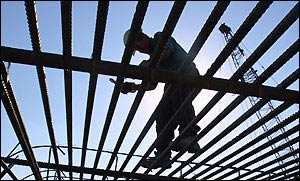 In the last week, several economic indicators and corporate profit reports provided good news for the US and UK as further evidence that the recession is over — at least on paper.
In the last week, several economic indicators and corporate profit reports provided good news for the US and UK as further evidence that the recession is over — at least on paper.
- The U.S. manufacturing sector grew in October for the third consecutive month and at a faster rate than expected, according to an industry report released on Monday. The October reading was the highest since April 2006, according to the Institute for Supply Management (ISM).
- The ISM report also said its employment index jumped for the manufacturing industry to 53.1 in October, its strongest showing since April 2006. The employment index has not been above the 50 mark since July 2008, when it was at 51. (Reuters)
- General Motors Co. reported its first monthly sales increase in nearly two years on Tuesday; Ford also racked up big gains in October, without help from incentives or the Cash for Clunkers program, providing further evidence that the U.S. economy appears to be on the mend. (Detroit News) — Thanks to Brian Williams for sending the link!
- U.S. factory goods orders rose in September more than expected, with orders climbing 0.9%, the Commerce Department said Tuesday, the fifth increase in six months. Durable goods climbed more than first thought, up 1.4%. Durables are expensive goods made to last at least three years, such as refrigerators. (WS Journal)
- U.K. manufacturing output rose at its fastest pace for seven years on a month-to-month basis in September, beating market expectations. (WS Journal)
- A report on pending sales of existing homes showed the number of contracts to buy previously owned homes in the U.S. rose in September for an eighth straight month, up 6.1 percent after a 6.4 percent gain in August, the National Association of Realtors said on Monday. (Bloomberg)
- As featured last week on GNN, the US gross domestic product has jumped by an annualized rate of 3.5 percent over the past three months, which means the economy is expanding at a healthy rate once again.
The country is still losing jobs, but at a slower rate for each of the last seven months. (It is expected that job growth will lag well behind economic growth.)



















